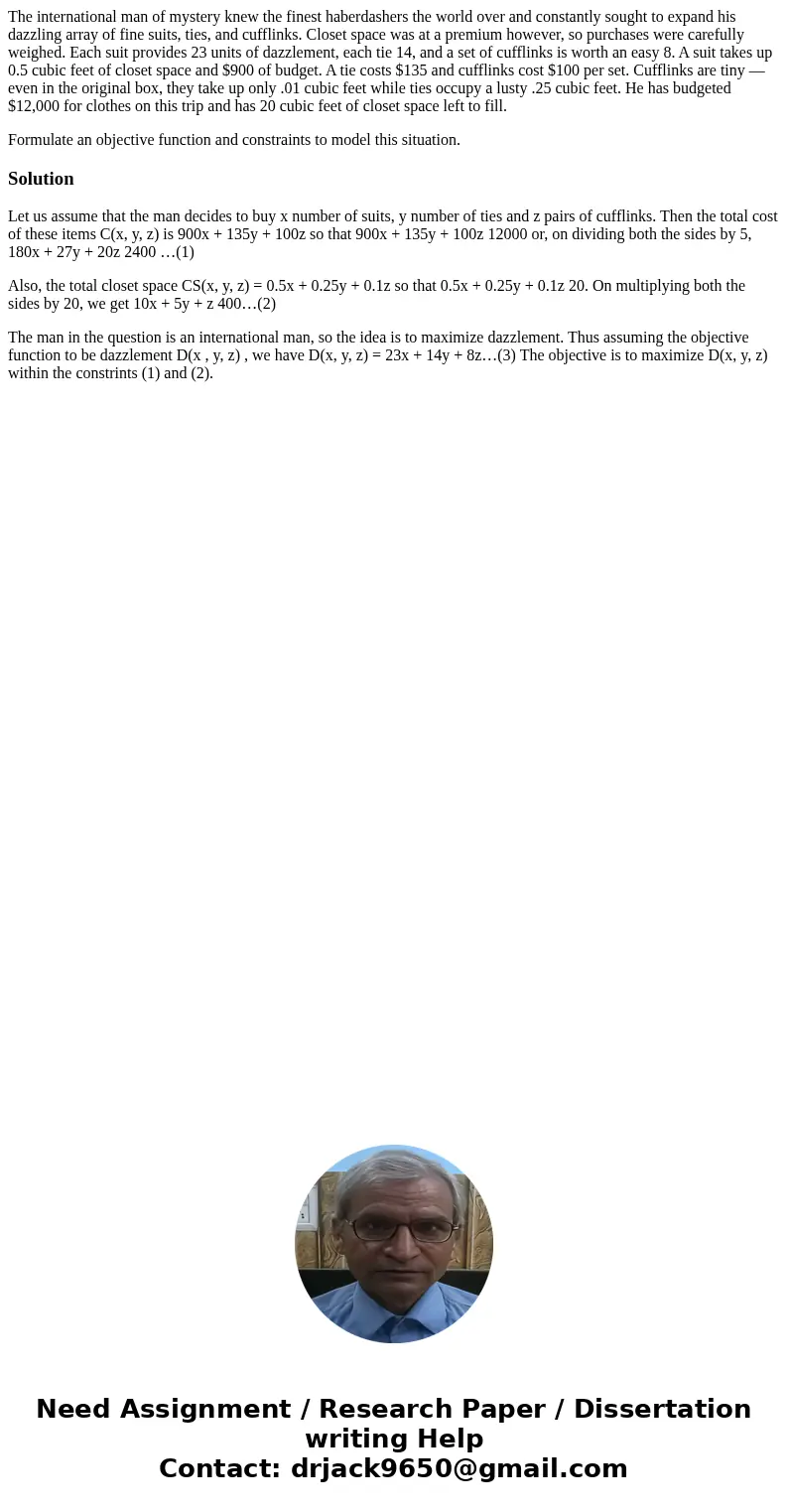The international man of mystery knew the finest haberdasher
The international man of mystery knew the finest haberdashers the world over and constantly sought to expand his dazzling array of fine suits, ties, and cufflinks. Closet space was at a premium however, so purchases were carefully weighed. Each suit provides 23 units of dazzlement, each tie 14, and a set of cufflinks is worth an easy 8. A suit takes up 0.5 cubic feet of closet space and $900 of budget. A tie costs $135 and cufflinks cost $100 per set. Cufflinks are tiny — even in the original box, they take up only .01 cubic feet while ties occupy a lusty .25 cubic feet. He has budgeted $12,000 for clothes on this trip and has 20 cubic feet of closet space left to fill.
Formulate an objective function and constraints to model this situation.
Solution
Let us assume that the man decides to buy x number of suits, y number of ties and z pairs of cufflinks. Then the total cost of these items C(x, y, z) is 900x + 135y + 100z so that 900x + 135y + 100z 12000 or, on dividing both the sides by 5, 180x + 27y + 20z 2400 …(1)
Also, the total closet space CS(x, y, z) = 0.5x + 0.25y + 0.1z so that 0.5x + 0.25y + 0.1z 20. On multiplying both the sides by 20, we get 10x + 5y + z 400…(2)
The man in the question is an international man, so the idea is to maximize dazzlement. Thus assuming the objective function to be dazzlement D(x , y, z) , we have D(x, y, z) = 23x + 14y + 8z…(3) The objective is to maximize D(x, y, z) within the constrints (1) and (2).

 Homework Sourse
Homework Sourse